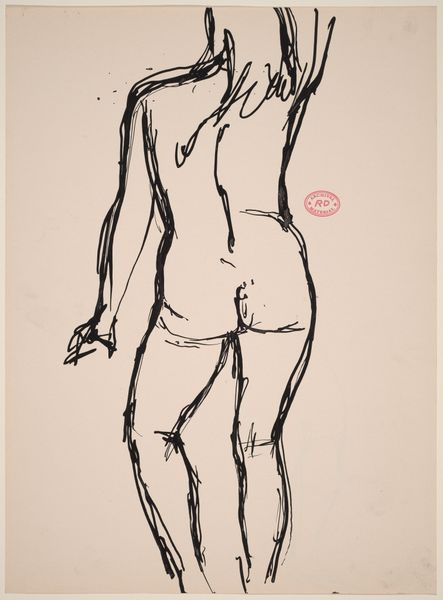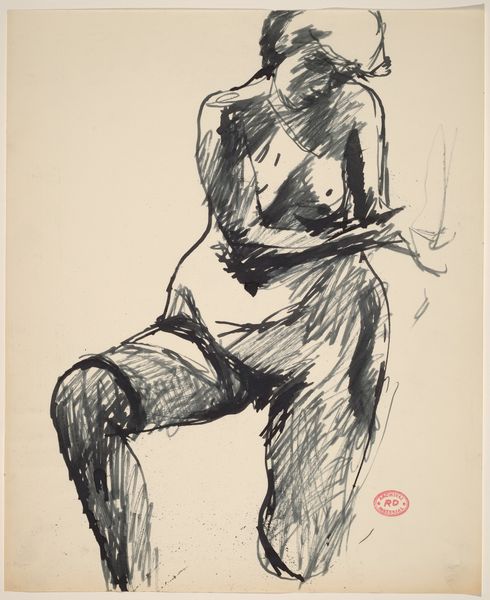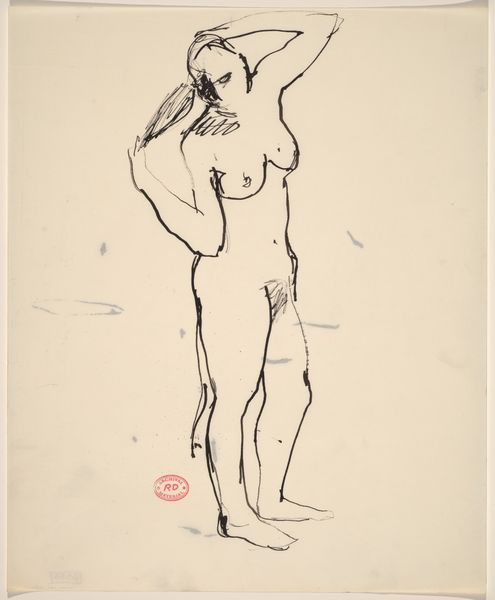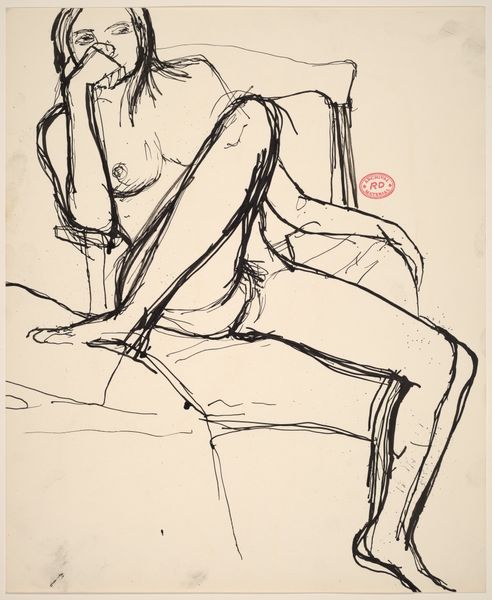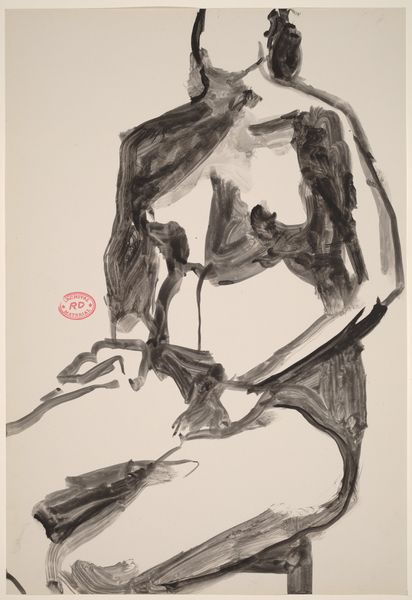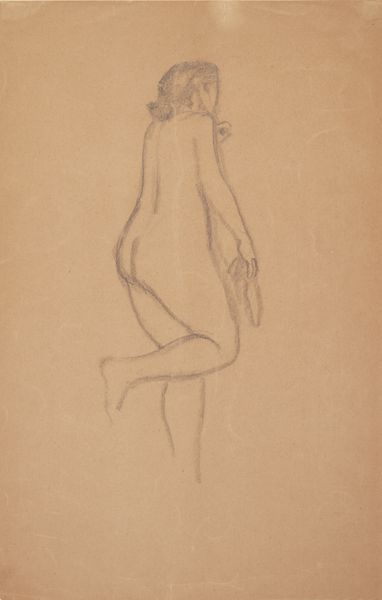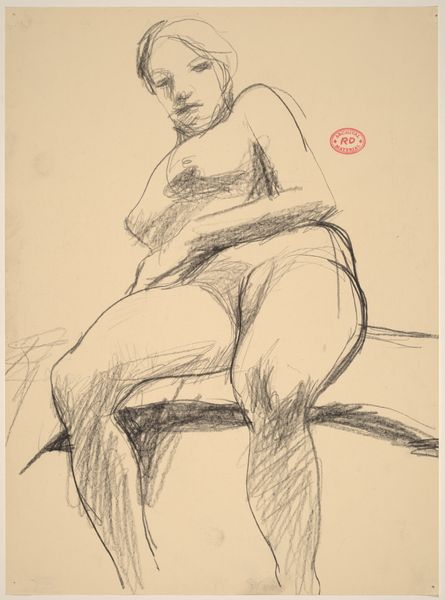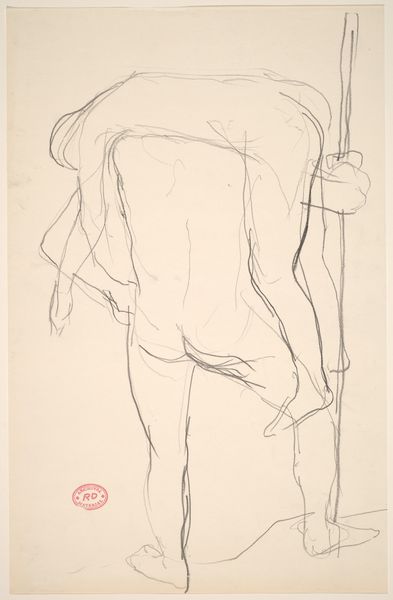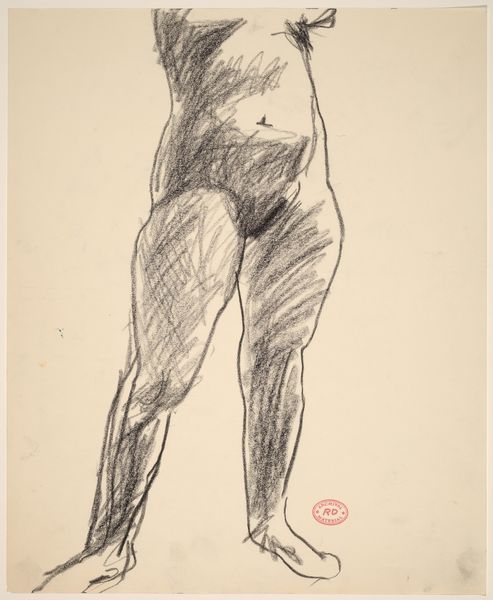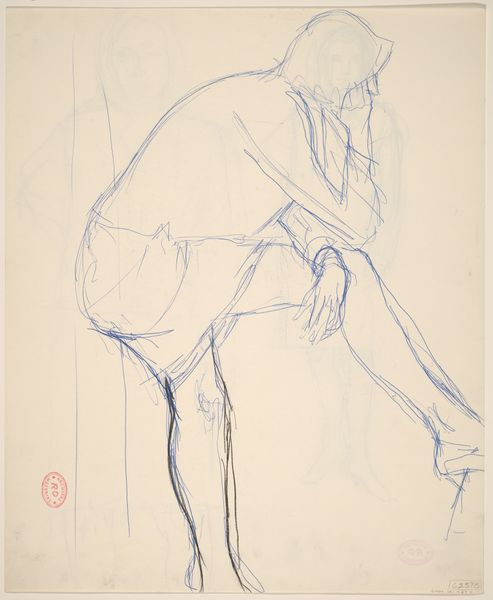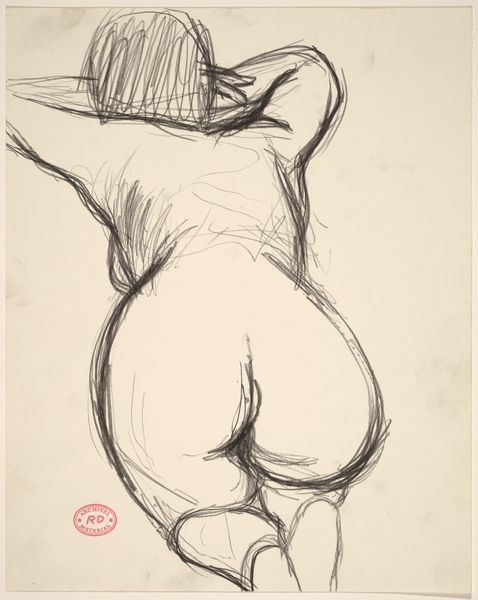![Untitled [back view of nude holding a support in her left hand] by Richard Diebenkorn](/_next/image?url=https%3A%2F%2Fd2w8kbdekdi1gv.cloudfront.net%2FeyJidWNrZXQiOiAiYXJ0ZXJhLWltYWdlcy1idWNrZXQiLCAia2V5IjogImFydHdvcmtzL2YwMDNlMDNjLTM5NWYtNGE2ZS1hYTMzLTlhOTMyZWMyM2YyYS9mMDAzZTAzYy0zOTVmLTRhNmUtYWEzMy05YTkzMmVjMjNmMmFfZnVsbC5qcGciLCAiZWRpdHMiOiB7InJlc2l6ZSI6IHsid2lkdGgiOiAxOTIwLCAiaGVpZ2h0IjogMTkyMCwgImZpdCI6ICJpbnNpZGUifX19&w=3840&q=75)
Untitled [back view of nude holding a support in her left hand] 1955 - 1967
0:00
0:00
drawing, ink
#
drawing
#
figuration
#
bay-area-figurative-movement
#
ink
#
nude
Dimensions: overall: 43.2 x 31.8 cm (17 x 12 1/2 in.)
Copyright: National Gallery of Art: CC0 1.0
Editor: So, this is Richard Diebenkorn's Untitled ink drawing from between 1955 and 1967. It’s a back view of a nude figure. The sketchiness almost makes it feel unfinished, and yet there's a real sense of presence. How do you read the political implications of this piece, considering Diebenkorn’s broader body of work? Curator: That "unfinished" quality you identify is key. Given the socio-political context of the mid-20th century, and Diebenkorn’s own positioning within the Californian art scene, we need to consider what a work like this communicates about the act of seeing and representing the body. Who is granted the right to look, and under what circumstances? The stark lines and negative space actively resist objectification, challenging the historical tradition of the female nude as passive subject. Does the inclusion of the 'support' impact your interpretation? Editor: It definitely does! It looks almost like a walking stick or cane, and it positions the model as perhaps fragile or aging, challenging notions of the ideal nude body. But in what other ways might this piece be seen as part of its time? Curator: The rapid, gestural lines – so characteristic of Diebenkorn – echo the spontaneity prized by the Abstract Expressionists, yet here they're applied to a representational subject. This merging of abstraction and figuration was a distinct move in the mid-century, reflecting a broader cultural shift away from rigid ideologies. How does the flatness and limited use of contour impact its visual accessibility in today's socio-political environment? Editor: I hadn't thought about it that way, but it definitely subverts any easy reading of the figure. The 'incomplete' rendering almost insists we focus on the artifice of the image itself rather than purely the depicted person. Thanks, that gives me a lot to think about! Curator: Exactly. It's through these tensions and contradictions that the work gains its resonance and historical weight. It seems like something so minimal opens avenues for expanded social commentary.
Comments
No comments
Be the first to comment and join the conversation on the ultimate creative platform.
